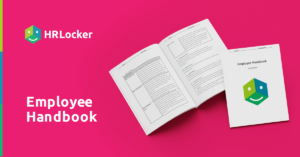All you need to know about Annual Leave

What is annual leave?
Annual leave is paid time off (PTO) work. By law, all employees are entitled to annual leave including full-time, part-time, temporary, and casual staff.
Most full-time employees are entitled to 4 weeks of annual leave each year. This is set out in the Organisation of Working Time Act, 1997, and is known as your statutory entitlement. Some employers might offer more annual leave as an incentive. You should always check your annual leave entitlement in your Contract of Employment or Employee Handbook.
Annual Leave Entitlements
In general, you are treated as being in employment while you are on:
- Maternity leave or additional maternity leave
- Adoptive leave or additional adoptive leave
- Paternity leave
- Parental leave
- Parent’s leave
- Health and safety leave
This means you can continue to build up your entitlement to annual leave.
You are entitled to annual leave for the first 13 weeks of carer’s leave.
How much annual leave and holiday pay am I entitled to?
Your annual leave entitlement depends on how much time you have worked in a leave year.
The statutory leave year runs from 1 April to 31 March. Many employers use the calendar year (January to December) instead of the statutory leave year for administrative reasons but this does not affect your statutory leave entitlements.
Calculating your annual leave
There are 3 ways to calculate your annual leave entitlement.
- If you have worked at least 1,365 hours in a leave year (see above), you are entitled to the maximum of 4 working weeks’ paid annual leave.1
- Calculate 1/3 of a working week for each calendar month in which you worked at least 117 hours.
- Calculate 8% of the hours you worked in the leave year, subject to a maximum of 4 working weeks.
1 You cannot use this method if you changed employment during the leave year.
When calculating your holiday entitlement, your employer should include all the hours you worked, including time spent on annual leave, maternity leave, parental leave, force majeure leave, adoptive leave or the first 13 weeks of carer’s leave.
If you have worked for at least 8 months, you are entitled to an unbroken period of 2 weeks’ annual leave. This means you can get 2 weeks off in a row.

Holiday pay
Holiday pay (pay for annual leave) must be paid in advance at your normal weekly rate.
If your pay changes from week to week (for example, because of commission or bonus payments), your holiday pay is the average of your pay over the 13 weeks before you take holidays.
Part-time employees
Generally, annual leave for part-time workers is calculated using number 3 above. This means you can get 8% of your hours worked.
If you work full time for some months and part-time for the rest of the year, you should calculate the leave for the full-time and the part-time periods of work separately.
Agency employees
If you are an agency worker, the employment agency or client company that pays your wages is the employer – for the purposes of the Organisation of Working Time Act 1997, and is responsible for providing your annual leave entitlement.
Enquire about using HRLocker in your organisation in 2024
Book a DemoLearn more about Annual Leave...
Employees can request annual leave at specific times. Your employer can accept or refuse your request. Your employer decides when annual leave may be taken, subject to a number of conditions. An employer must:
– Consider your family responsibilities, as well as the available opportunities for rest and recreation.
– Discuss your annual leave with you at least one month before you are to take the leave.
Annual leave should be taken within the leave year. Depending on your employer, you can agree to take your annual leave within 6 months of the relevant leave year.
Any further carrying-over of annual leave would need to be agreed upon between you and your employer.
Your statutory entitlement to annual leave continues to build up when you are on sick leave, if you have a medical certificate.
If you are leaving a job without taking all the annual leave you are entitled to, your employer must pay you for the days you have not taken.



